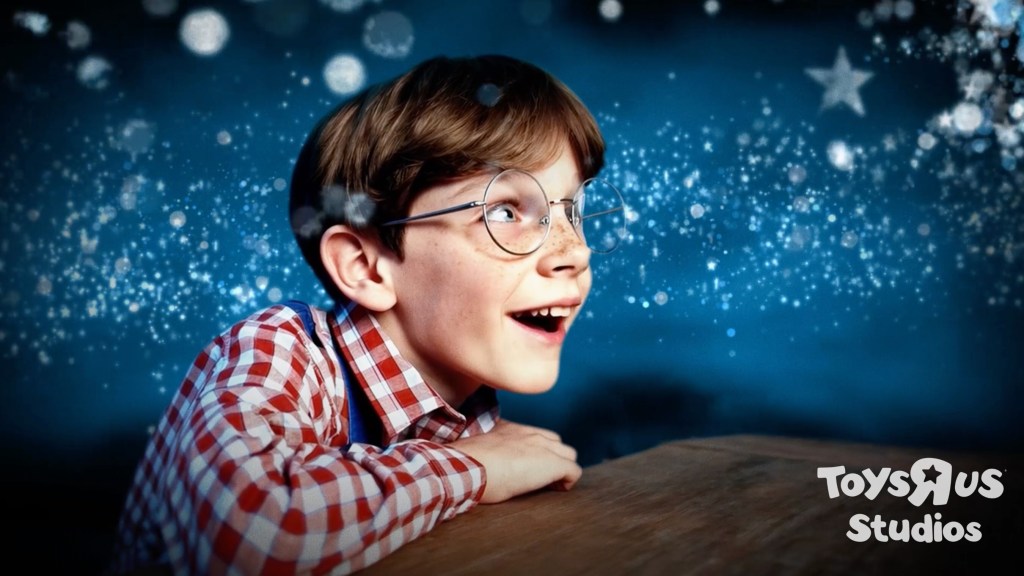Don’t miss OpenAI, Chevron, Nvidia, Kaiser Permanente, and Capital One leaders only at VentureBeat Transform 2024. Gain essential insights about GenAI and expand your network at this exclusive three day event. Learn More
Retailer Toys R Us taps into AI-generated videos with its latest brand video, which uses OpenAI’s non-public generative AI video model Sora.
The video, made with Sora by ad agency Native Foreign, gives a quick summary of the origin story of Toys R Us by its real life founder, Charles Lazarus.
It features a fully AI representation of a young Lazarus and the toy store’s mascot, Geoffrey the Giraffe.
In a press release, Toys R Us said the over-one-minute video was produced by Toys R Us Studios president Kim Miller Olko and directed by Native Foreign co-founder and creative director Nik Kleverov. It was screened during the 2024 Cannes Lions Festival. Toys R Us said the video came together, from conception to final product, in just a few weeks.
Countdown to VB Transform 2024
Join enterprise leaders in San Francisco from July 9 to 11 for our flagship AI event. Connect with peers, explore the opportunities and challenges of Generative AI, and learn how to integrate AI applications into your industry. Register Now
On X, an account that identified as Kleverov wrote that it was “an honor to create the first brand film made with OpenAI’s Sora. Bravo to Toys R Us for trusting me to direct this Geoffery the Giraffe origin story.”
Kleverov also revealed more details about the creation process of the AI video in follow-up responses to questions on X, writing that Sora “allows you to explore your imagination.. in motion.”
Thank you Hendo! It allows you to explore your imagination.. in motion.
— Nik Kleverov (@kleverov) June 25, 2024
It was around a dozen people that worked on this at our shop. Art Directors, Designers, Creatives, etc. Original music as well.
— Nik Kleverov (@kleverov) June 25, 2024
Venture Beat reached out to both Native Foreign and Toys R Us for more information on the ad and will update when we hear back.
More momentum for Sora and AI video generally
OpenAI released Sora in February to a limited number of creators the company handpicked. It’s still not generally available to the public as the company said it wants to keep “red-teaming” the model — that is, testing it for potential misuses — and receive feedback from its initial small group of users.
Since then, OpenAI has expanded access to the text-to-video platform to other filmmakers and premiered five short films entirely made using Sora during the 2024 Tribeca Film Festival in June.
Sora was also used by filmmaker Paul Trillo to make a first-of-its-kind AI music video for the indie chillwave musician Washed Out that premiered online in early May 2024.
Native Foreign and Kleverov were among the first few filmmakers given access to Sora by OpenAI. Kleverov said in an OpenAI blog post in March that Sora can “rapidly iterate on creative for brand partners” and remove the possibility of budgets shaping narratives.
Elements of the final Toys R Us video showed up in Kleverov’s first video posted by OpenAI, specifically the bicycle shop featured at the beginning. (The Bicycle Repair sign is greatly improved in the final video and no longer reads “repaich.”)
Of course, OpenAI is far from the only company making AI-generated videos a reality. Runway demoed the next generation of its video model Gen-3 Alpha, which can make 10-second video clips, and Luma AI, Kling, and Pika Labs are all offering text-to-video AI models for public use, despite concerns that these models may have violated copyright by training on copyrighted video clips without permission, consent, or payment.
Runway is among the companies being sued by artists for this very reason, part of a growing wave of litigation against generative AI media tooling companies.
Source link

